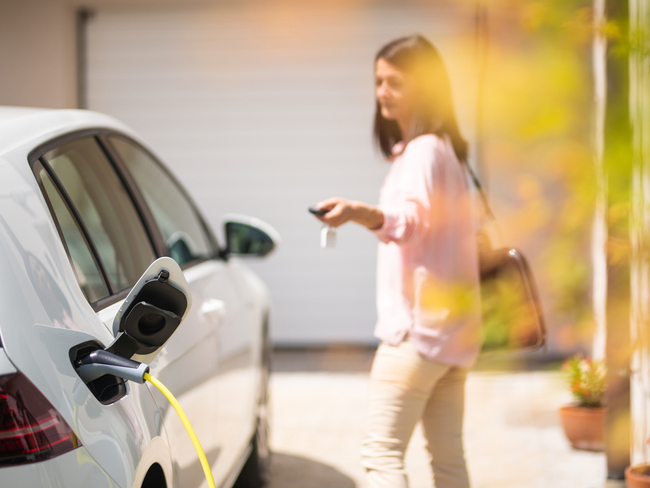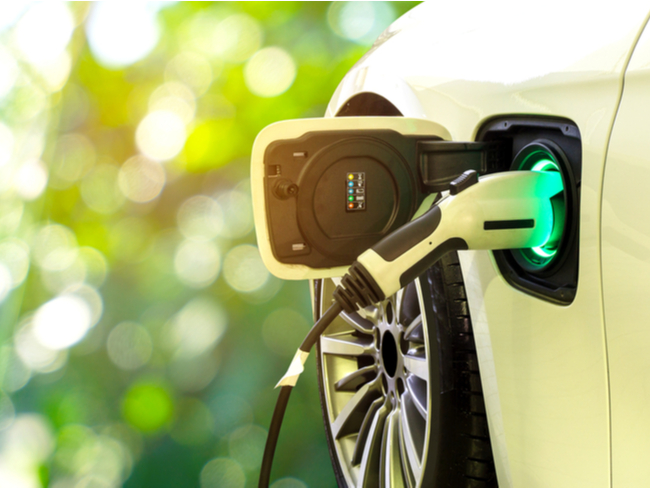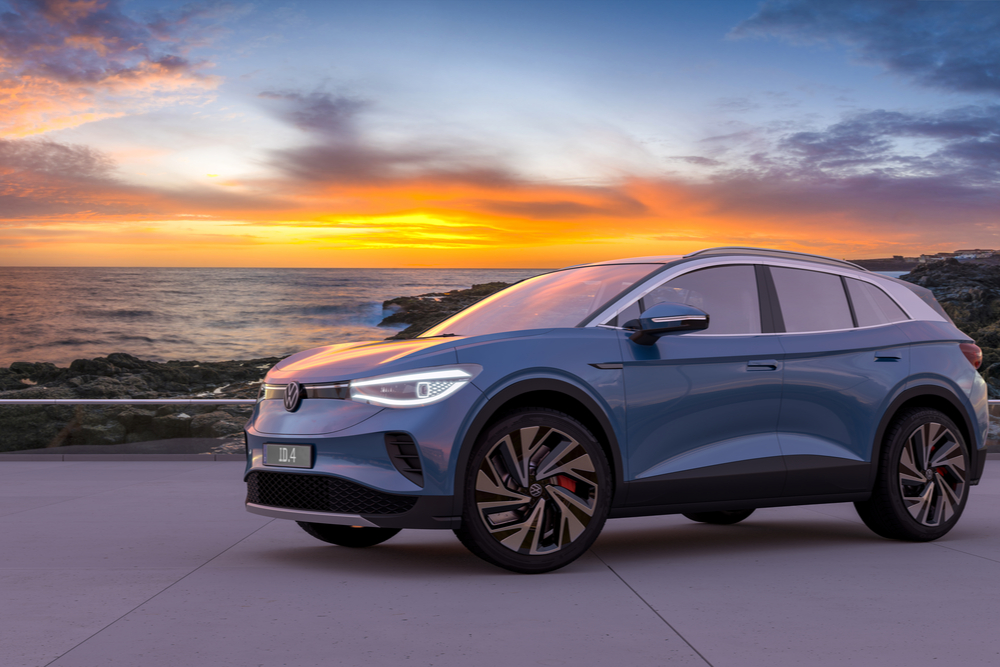Upgrading your vehicle or entire fleet? Mark Gallivan outlines what you need to know when choosing between various electric vehicle types.
In 2021 the internal combustion engine (ICE) is looking like an ageing rock star on a farewell tour.
If the European Union’s target for 95 g/km CO2 emissions for a brand’s entire fleet was an alarm clock call for motor manufacturers, the impending proposal to ban ICE engines (petrol and diesel) altogether is proving a ticking time bomb.
The measures proposed by the EU to reduce carbon emissions are ambitious.
“In Ireland the electrification of transport is a key policy in the Climate Action Plan. The target is 1m electric vehicles sold in Ireland by 2030”
A proposed 55pc cut in CO2 by 2030 versus current 2021 levels and a targeted 100pc cut in emissions by 2035. Effectively this issues a mandate for car manufacturers to ditch all ICE engine production within the 27-country bloc. Cars alone account for 12pc of all EU emissions.
Grand designs

So far, so good. Dig deeper and buried in the same proposal is a virtual landmine for Governments and lawmakers hampered by weak political leadership, Brussels is also proposing legislation mandating countries to fully harmonise installation of charging points by installing them 60 kilometres apart on major roads by 2025. The vision for growth imagines 3.5m public charging stations to rise to 16.3m between 2030 and 2050. Harmonisation and grand scale infrastructure expansion aside, the incremental demands on the power grid by cars alone and adoption by new car buyers is a challenge that remains to be overcome.
This grand design of zero emissions will not come cheap. The Commission estimates between €80bn to €120bn will be needed to underwrite the rolling out of new public charging stations within the pan-bloc project.
According to the SIMI during the first eight months of 2021 just 6,227 (6.9pc) new fully electric cars were sold in Ireland. Petrol/Electric (Hybrid) cars account for 16.56pc
Buyers testing BEVs complain of an experience that is disappointingly one dimensional. Irrespective of how fast a BEV can accelerate off the line it can drive like a 3D printed version of an ICE car. Gone is the satisfaction of using a manual gearbox and swapping it for a BEV’s single-speed transmission. The intangible relationship with car and driver is frequently lost.
There are strands of light for the enthusiastic driver. The new Hyundai IONIQ5, Mini Electric are both terrific cars to drive. For head turning looks the IONIQ5 garnered more slack jaws than I’ve witnessed on any new test drive and few new cars look as dramatic of cleverly conceived as it. Turning the Mini into an electric car has done the unthinkable. It’s now one of the most thrilling Minis to drive.
In Ireland the electrification of transport is a key policy in the Climate Action Plan. The target is 1m electric vehicles sold in Ireland by 2030.
Where does this leave Mr and Mrs average buyer of new cars in 2021? Gone are the mental guide markers for buyers to properly assess the good versus the bad performing new cars. We’re left grappling with unfathomable kWhs and battery charging types. Navigating different charging cables and forced into the currently sub-standard solution in getting from A to B and often onto Z from a charging station that often is busy, incompatible, slow or out of order.
Weaning new BEV buyers away from local filling stations that fill up a car in 10 minutes in a car that usually offers twice the range of a typical battery electric vehicle (BEV) is still the drawback.
I’m buying an electric car but I’m hearing about BEVs, PHEVs and Hybrids. What’s the difference?
A battery-electric (BEV) is a fully electric car like a Nissan Leaf or Renault Zoe and runs on just battery power only. You will be saying goodbye to the petrol station forecourt forever.
A plug-in-hybrid is different. It uses a petrol or diesel engine that’s charged up with limited electric power for short commutes. This is often the best entry into electrified car ownership as you’ll never be left stranded by the roadside because when the battery power runs out you still have an engine power to get you home. Regardless of what the motor industry or legislators say, owning a fully electric vehicle in 2021 will be more stressful if you cannot charge up at home.
For female drivers the possibility of their fully electric car running out of charge from a safe location or home remains a serious concern that is never addressed by policy makers.
Agreed. But I’m definitely tempted by a fully electric car. It’s a great choice, right?
It is. Depending on where you live and how you live. The simplest way of deciding if a fully electric car is right for you is to calculate your weekly mileage with your route and if you can charge your car at home or at work. Most importantly of all, you’ll need to make sure on/off street charging stations are available along the way from point A to B. A fully electric car may make good sense in Dublin or Cork but not in deepest Mayo. Factor in the battery sizes and the range claimed by manufacturers. Many will travel 400 kms or more, some city cars like the Mazda MX-30 are built to do half of that. Remember, the claimed ranges by manufacturers are just that – claimed ranges.
The claimed electric ranges appear accurate? Aren’t they?
No, they are not. Look closer and, like all advertisers, car manufacturers use phrases like “claimed range” and “up to”. There is an independent test called the WLTP (Worldwide Harmonised Light Vehicle Test Procedure) by the EU. It replaces the old and overtly ambitious NEDC test from the 1980s that was historically misleading when compared with the actual car’s economy.
The WLTP is more accurate, but the claims rarely don’t hold water in the real world. Regardless, any car’s electric range is reduced by cold weather and continual motorway driving. If you buy a Mini Electric with a maximum 270km range (169 miles) that can quickly drop to 220km (137 miles) only after a few miles on a motorway. No matter what time of the year it is.
But every car manufacturer is saying I should buy an electric car now, so what are you talking about?
Of course, they are. It’s in their commercial interest to do this. The Irish Government is banning new car sales of petrol and diesel cars in 2030. That is less than nine years away.
Carmakers are currently scrambling to convince buyers to go electric. Go to https://www.seai.ie/ to find out which cars are eligible for Government grants.
€5,000 is available for qualifying electric vehicles if bought privately. From July 2021 a cap of €60,000 is restricted to the full price of all-electric vehicles and excludes any new vehicle under €14,000. This grant will be based on the non-discounted price outside of VRT grants or support.
Yet there are good unforeseen benefits in buying an electrified car as well. Like free parking in on-street charging bays. The cost of fuel will be about a quarter of what you currently pay if you buy a hybrid electric. There’s lower motor tax and lower car servicing charges if it’s a pure electric car. Annual motor tax for a BEV is €120 and €170 for a PHEV (plug-in-hybrid – the ones with the cables).
But hold on, I trust car manufacturers!
You’re too trusting. Car manufactures want to do one thing – sell cars. That’s it.
I don’t care, I’m going ahead. Anyway, there’s plenty of charging stations about!
It’s here that you need to do more research. Is there a charging bay close to your home or at home? If you can, have a look to see how busy it is at peak times. Next, find the location of the charging stations dotted along your daily route if you travel over 100 miles or so in a fully electric car. You will need to stop and charge up and this could take around 45 minutes. This is assuming the station is unoccupied or not out of service.
Ask yourself, have you factored that additional time for your life’s demands? You won’t have this problem in a hybrid car (one with an engine and battery). If you need to travel long distances for work or your family this is the only sensible long-distance option at the moment. If you live in the city and rarely venture outside, then yes, a pure electric car makes a good choice.
You’re telling me I need a cable to charge my car. What do I need to know?

Firstly, let’s start with the basics. You can charge your car slow, fast or use a rapid charger and fully charge a car, often in one hour. It is possible to charge your car overnight using a domestic three pin plug. But that may take 8 to 12 hours.
Fit a dedicated home charging point and that increases the speed at which you can replenish the battery.
There are different types of charging cables:
- Type 1 – a-5 pin single phase power socket.
- Type 2 – a 7-pin three phase power. This is the common EU standard charger. Can be used at a home charging point or a national charging stations. It incorporates a locking pin allowing for secure locking while away from the car. Supports 3.7kW to 7kW charging.
- CCS – an enhanced version of a Type 2 cable. A rapid charger. Supports 50kW – 350kW charging.
- CHAdeMO – offers quick charging up to 50kW. Approx 112km from a 30 minutes charge.
- AC, DC, CCS. What’s this all about?
- AC or Alternating Current is the power that comes from your home via a wall box. It charges an EV slowly, typically over six to eight hours overnight, on a low tariff. Perfect then if you have a house driveway. It is difficult to impossible if you live in an apartment with no outside charging point.
- DC stands for Direct Current is the faster way of charging your car on an on/off street car charging station.
- CCS is the Combined Charging System that combines two DC pins below the Type 2 connector. The most common connector used for fast charging.
- KWh or kiloWattHour measures the amount of electricity being used from a charging point along with the size of the car’s battery. Now’s the time to start thinking in kWh and forget mpg if you’re considering a new fully electrified car. Essentially, the more kWhs you’ve got, the further you will travel on a single charge.
- Lithium-ion is the most commonly used battery type in an electric car.
- Degradation: Do remember that car batteries are just like the batteries found in your smartphone. They degrade and lose power over time. How often you charge them will dictate degradation, or better described as wear and tear. Make sure a look at each BEV/PHEV/Hybrid battery life guarantee offered by car brands. Always look at what’s covered in warranty the cost of repair or replacement.
- Hybrid Electric Vehicles (HEV). These are vehicles that are not plugged in anywhere but instead run off the recuperated, or recycled, energy generated under a car’s braking and stored in the battery.
- Plug-in-hybrid: Think of it as a halfway house to electric driving. They use petrol or diesel engines but start up silently in electric battery mode and will travel 30 or 40kms or until the battery is flat when the engine kicks in automatically.
- Pure EV or BEV: It is what it says it is. A BEV or Pure EV vehicle is one with no engine and just a bank of batteries in the floor.
How do I calculate the kWh charging if using a home wall box?
Simply look at the battery capacity of the vehicle. Let’s say it has a battery size of 50kWh. If a home wall box is capable of 7kWh all you do is divide that number 7 by 50 to roughly get the number of hours needed for a full charge.
Someone on Facebook said second hand fully electric cars are very reliable. So I’ll be fine.
Before you buy a second hand fully electric car there are a few things you need to know. They have less moving parts from the engine but they are powered by a battery. If you buy a used fully electric car check the manufacturers’ battery warranty. Is it passed onto you as a second or maybe third owner? You will need a full independent check of the betters and how much degradation is has accumulated over its life. A rule of thumb is to expect a 2.5pc reduction in battery range. The cost of replacing a battery could tens of thousands. This comes into play when calculating the percentage of that cost vs. the market value of the used car with heavy depreciation.
Anything else?
Research everything. Try as many different cars as you can. Do not be pressurised into buying any car there and then in the showroom by the salesperson. If they’re any good they will take care of you and give you as much time as you need. Armed with all that you should have the basics of electric car buying covered.




